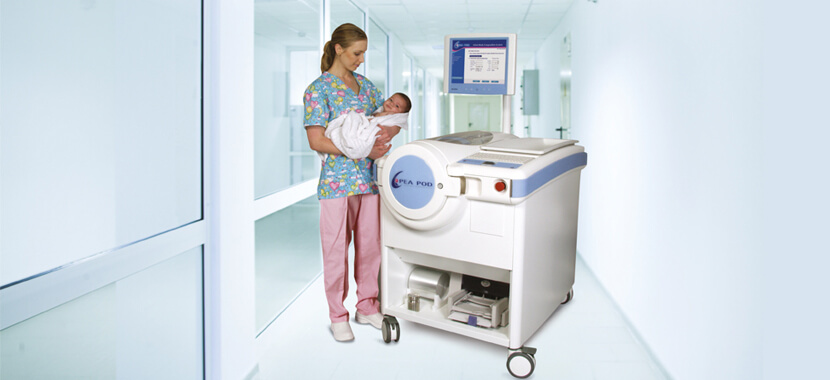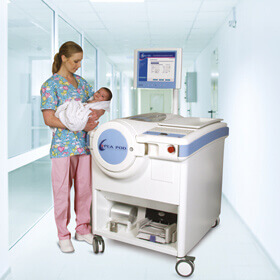

Pea-Pod
Many researchers and clinicians acknowledge that body composition assessment provides a much better gauge of infant growth and nutritional status than length and weight (anthropometric) measurements. A reliable body composition analysis helps provide the vital information necessary to assess the effectiveness of diet and medical interventions, especially in low birth weight infants.
This need for an accurate, safe and noninvasive method for measuring body composition in infants led to the development of the PEA POD Infant Body Composition Tracking System. The PEA POD is an Air Displacement Plethysmograph which uses whole-body densitometry to determine body composition (fat and fat-free mass) in infants ranging in size from 2.2 lbs (1kg) to 17.6 lbs (8 kg). It is a complete turnkey system based on the same patented Air Displacement Plethysmography as the BOD POD® Body Composition Tracking System, which has been used successfully for assessing the body composition of children and adults since 1994.
Peapod
PEA POD Highlights:
Uses the most advanced technology.
Accurate and precise based on research findings.
Safe - non-invasive and ideally suited for repeated testing.
Short test time.
Accommodates most infant behaviors.
Comfortable testing environment.
Simple – menu-driven software with data management capability.
No special technician licenses required.
Mobile – device can be rolled to bedside locations.
The PEA POD is extremely simple to operate, with software prompts guiding the operator through each step of the process. There are no compliance issues, and the temperature-controlled test chamber provides a comfortable test environment for the infant. A complete analysis takes only about 7 minutes.
The precision, accuracy, and reliability of the PEA POD have been validated through various independent research studies. See PEA POD Research for more information.
Peapod
The PEA POD uses patented Air Displacement Plethysmography for determining percent fat and fat-free mass in infants. The simple, 7-minute test consists of measuring the subject's mass (weight) using a very precise electronic scale, and volume, which is determined while the infant lies inside the PEA POD chamber. From these two measurements, the infant’s body composition is calculated.
How it Works: Peapod The PEA POD consists of two chambers. The Test Chamber is accessed through the Test Chamber Door and is where the infant is placed while in the Test Chamber Tray for the volume measurement. The acrylic Window allows the infant to be viewed at all times while inside the Test Chamber. The second, or Reference Chamber, is located inside the PEA POD. During the brief data collection period of the volume measurement, the chamber door is secured by an electromagnet. A Diaphragm, mounted internally between the two chambers, oscillates during testing and causes small changes in volume inside the chamber. The pressure response to these small volume changes is measured by first determining the interior volume of the empty PEA POD chamber, then measuring it again with the infant inside. By subtraction, the infant’s body volume is obtained.
Peapod
Once the infant’s mass and volume are determined, body density is calculated and the relative proportions of fat and fat-free mass are determined.